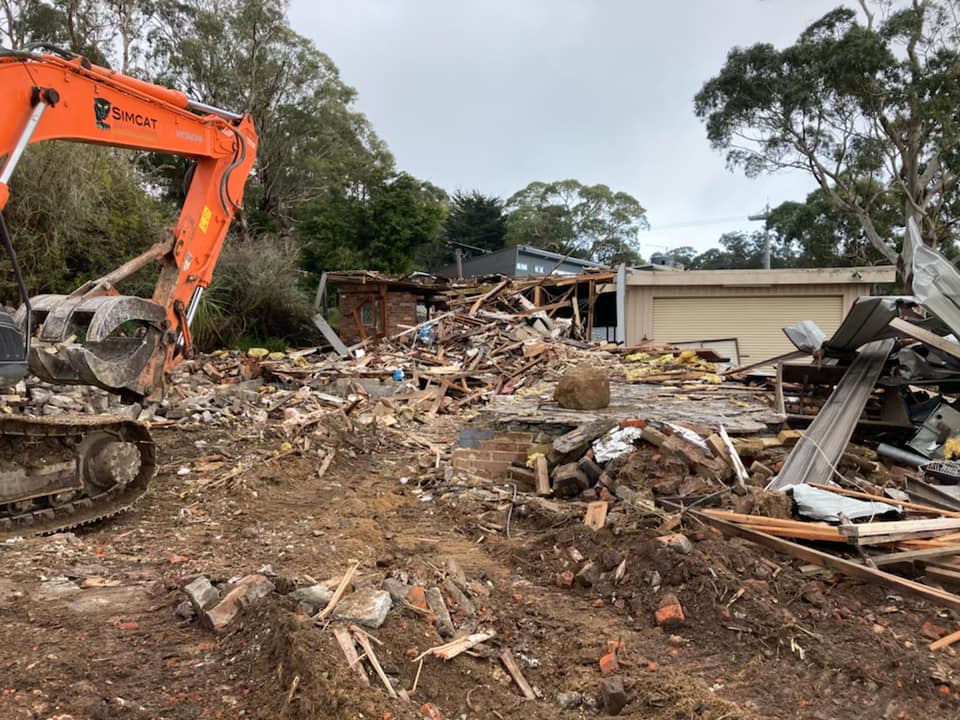Total Site Clearing Techniques: Best Practices for a Successful Site Clean-Up
November 14, 2024
Simcat Group in Melbourne offers professional Total Site Clearing services, using best practices for efficient and thorough site clean-up and preparation.
Total site clearing is a critical step in preparing land for construction, ensuring that the site is free of vegetation, debris, and obstacles. By following best practices, the clearing process can be done safely, efficiently, and with minimal environmental impact.
Key Site Clearing Techniques
Effective site clearing is essential for any construction or land development project, setting the foundation for future work. These practices ensure a smooth and efficient site preparation, ready for construction.
• Surveying and Planning: Before any clearing begins, it’s essential to conduct a detailed site survey. This will identify the types of materials present on the land (trees, rocks, old structures) and any potential hazards like underground utilities. A well-crafted plan based on this survey ensures that the clearing process is efficient and safe.
• Vegetation Removal: Trees, shrubs, and undergrowth must be cleared first. Depending on the size of the area, you may use manual cutting, mechanical tree removers, or bulldozers. For eco-conscious projects, select tree felling or mulching machines that leave useful organic material behind for erosion control or as fertiliser.
• Debris and Waste Management: Construction debris or natural materials such as rocks and roots must be cleared effectively. Dump trucks and loaders help transport waste materials offsite, but recycling or reusing materials like crushed concrete or composting vegetation can be a more sustainable solution.
• Demolition of Existing Structures: If old buildings or infrastructure are present, demolition is a necessary part of site clearing. After demolition, ensure all waste materials are sorted and disposed of according to local environmental regulations.
• Soil Stabilisation and Grading: Once the land is cleared, grading and soil stabilisation are key to preventing erosion and water runoff issues. Bulldozers and graders shape the land to create a level surface while adding appropriate drainage to avoid flooding problems during construction.
Best Practices for a Successful Site Clean-Up
To ensure a successful site-clearing process, it’s important to follow key best practices. This plays a critical role in maintaining efficiency, compliance, and worker safety throughout the project.
• Follow Local Regulations: Always ensure that the clearing process adheres to local council regulations. Permits may be required, and the removal of protected trees or land features might be restricted. Non-compliance can lead to fines or project delays.
• Erosion Control Measures: As vegetation is removed, the risk of soil erosion increases. Incorporating erosion control strategies such as installing silt fences, retaining existing grass in certain areas, or adding mulch will help prevent soil loss during rainy periods.
• Waste Minimisation and Recycling: Proper waste management is crucial to any site-clearing project. Reuse or recycle as much material as possible. For instance, trees can be mulched for use in landscaping, and demolished concrete can be crushed and reused in foundations or roadways.
• Safety Protocols: Given the use of heavy machinery, safety should always be a priority. Ensure that all workers are equipped with the necessary personal protective equipment (PPE) and that safety measures, such as machine inspections and hazard assessments, are conducted regularly.
SIMCAT Group is a leading provider of total site-clearing services in Melbourne. We are committed to providing a high-quality service that meets the needs of our clients and protects the environment.
Optimized by: Netwizard SEO

